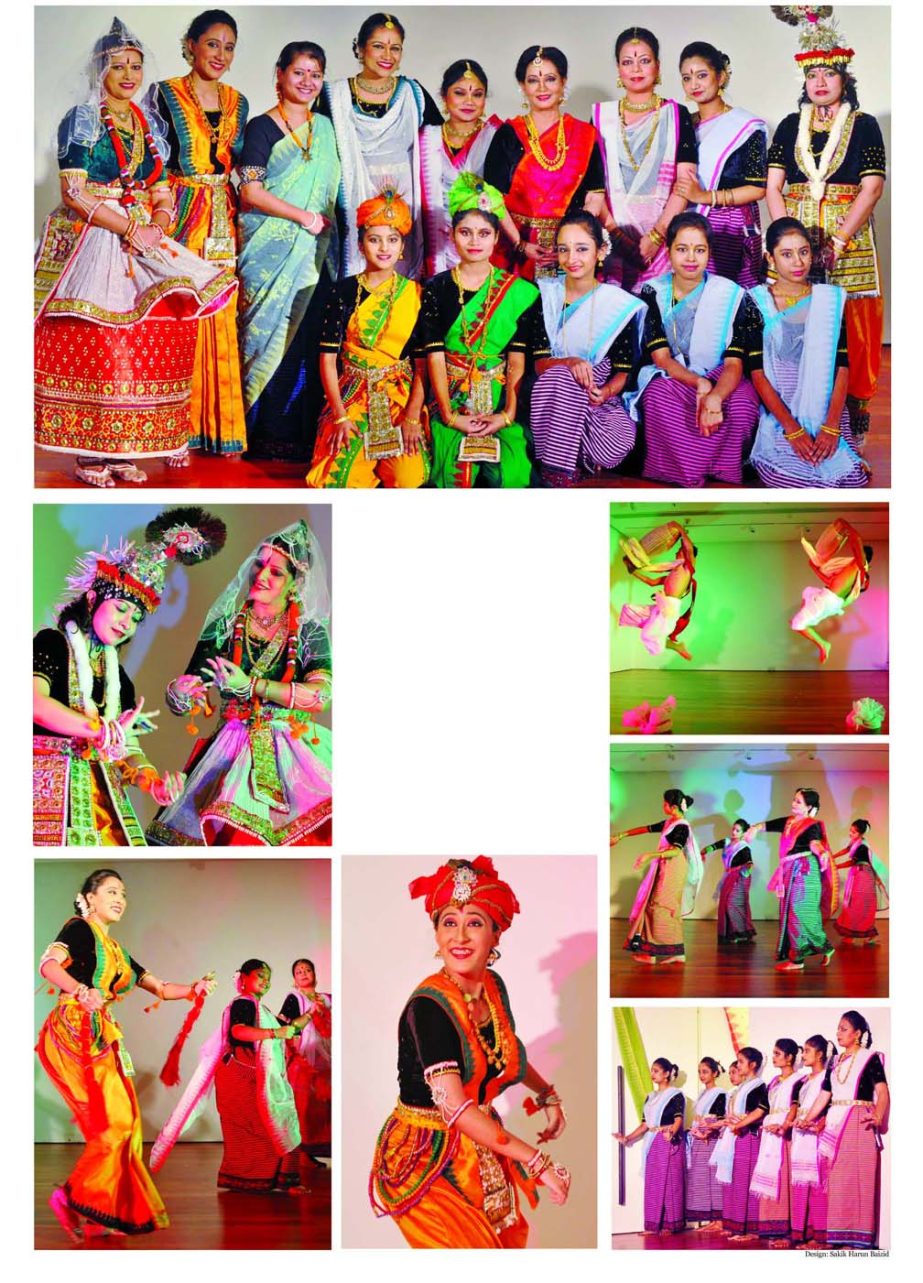
Sheikh Arif Bulbon :
Bengal Foundation organised a monthly series of lectures and demonstration programmes titled ‘Understanding Classical Dance,’ which has been curated and presented by celebrated dance artiste, choreographer and educator, Sharmila Banerjee.
The first programme in this series took place on October 21 in the city. The subject of the programme was Monipuri dance.
Giving insights into the touches of Monipuri dance, one of the nine forms of Indian classical dance, Sharmila Banerjee talked about the origin and history of the dance genre and demonstrated essential steps and hand movements with the assistance of a team of young dancers – Sonia Rashid, Afsana Farhana Ahmed, Ira Bala, Krishna Roy, Sudeshna Swayamprabha, Meghomala, Elvis Mostafa, Rikhia, Ruponti, Awditiya and Anisha. Two
visiting mridangam players – Amrita Sinha and Labu Sinha from Kamolganj, Sylhet also took part in a pungcholom performance. The event featured audio-visual contents, live dance pieces, verbal explanations and pragmatic demonstrations.
The demonstration also featured two Mridanga players from Komolganj of Sylhet, who travelled to Dhaka especially for the demonstration event.
In Monipur, surrounded by mountains and geographically isolated at the meeting point of the orient and mainland India, the dance form developed its own specific aesthetics, values, conventions and ethics.
The cult of Radha and Krishna, particularly the Raasleela, is central to its themes, but the dancers usually incorporate the characteristic symbols (Kartal or Mandira) and double-headed drum (Manipuri Mridangam) of Sankirtan into the visual media.
An alumnus of Visva-Bharati University of Shantiniketan, Sharmila Banerjee was bestowed with the Nartan Visharad title after completing her post-graduate course in Manipuri dance at the Manipuri Nartanalaya in Kolkata under the renowned Manipuri maestro Guru Bipin Singh and Srimati Kalavati Devi.
Sharmila Banerjee is currently Head of Dance Department at Chhayanaut and runs her own dance school Nritya Nandan.
Bengal Foundation organised a monthly series of lectures and demonstration programmes titled ‘Understanding Classical Dance,’ which has been curated and presented by celebrated dance artiste, choreographer and educator, Sharmila Banerjee.
The first programme in this series took place on October 21 in the city. The subject of the programme was Monipuri dance.
Giving insights into the touches of Monipuri dance, one of the nine forms of Indian classical dance, Sharmila Banerjee talked about the origin and history of the dance genre and demonstrated essential steps and hand movements with the assistance of a team of young dancers – Sonia Rashid, Afsana Farhana Ahmed, Ira Bala, Krishna Roy, Sudeshna Swayamprabha, Meghomala, Elvis Mostafa, Rikhia, Ruponti, Awditiya and Anisha. Two
visiting mridangam players – Amrita Sinha and Labu Sinha from Kamolganj, Sylhet also took part in a pungcholom performance. The event featured audio-visual contents, live dance pieces, verbal explanations and pragmatic demonstrations.
The demonstration also featured two Mridanga players from Komolganj of Sylhet, who travelled to Dhaka especially for the demonstration event.
In Monipur, surrounded by mountains and geographically isolated at the meeting point of the orient and mainland India, the dance form developed its own specific aesthetics, values, conventions and ethics.
The cult of Radha and Krishna, particularly the Raasleela, is central to its themes, but the dancers usually incorporate the characteristic symbols (Kartal or Mandira) and double-headed drum (Manipuri Mridangam) of Sankirtan into the visual media.
An alumnus of Visva-Bharati University of Shantiniketan, Sharmila Banerjee was bestowed with the Nartan Visharad title after completing her post-graduate course in Manipuri dance at the Manipuri Nartanalaya in Kolkata under the renowned Manipuri maestro Guru Bipin Singh and Srimati Kalavati Devi.
Sharmila Banerjee is currently Head of Dance Department at Chhayanaut and runs her own dance school Nritya Nandan.

